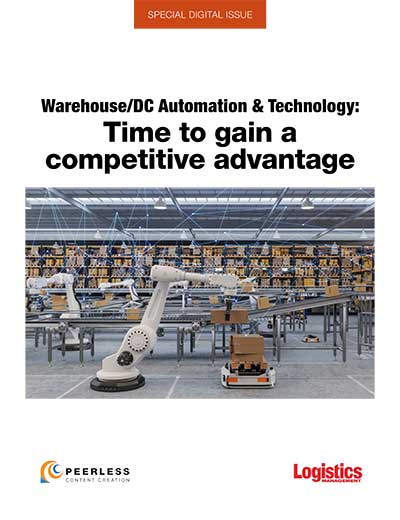Ongoing high import levels remain a key theme of Port Tracker report
High import levels at United States-based retail container ports remain fully intact, according to the most recent edition of the Port Tracker report, which was released today by the National Retail Federation (NRF) and maritime consultancy Hackett Associates.
The ports surveyed in the report include: Los Angeles/Long Beach; Oakland; Tacoma; Seattle; Houston; New York/New Jersey; Hampton Roads; Charleston, and Savannah; Miami; Jacksonville; and Fort Lauderdale, Fla.-based Port Everglades.
Authors of the report explained that cargo import numbers do not correlate directly with retail sales or employment because they count only the number of cargo containers brought into the country, not the value of the merchandise inside them, adding that the amount of merchandise imported provides a rough barometer of retailers’ expectations.
The report explained that imports hit a new record this spring, with volume over the first half of 2021 pegged to be up by one-third annually, or 33.9%, driven by the economy continuing to recover from the COVID-19 pandemic. This is in line with previous editions of the report, which observed that U.S.-bound retail container imports are expected to “grow dramatically” over the first half of the year, with the import surge now extending through the summer months, with retailers focused on meeting high levels of consumer demand.
And the report also noted that first half growth is “skewed,” due to the significant drop-off in imports over the first six months of 2020, adding that the six-month total of 12.7 TEU (Twenty-Foot Equivalent Units) would put 2021 on pace to eclipse 2020’s 22 million TEU.
“Despite the continuing pandemic, most consumers are in good financial health and aren’t hesitating to spend,” NRF Vice President for Supply Chain and Customs Policy Jonathan Gold said in a statement. “More spending translates into more merchandise arriving at our ports as retailers continue to meet increasing demand. The cargo surge that began last fall doesn’t show any sign of stopping. Unfortunately, disruption and congestion issues are also continuing.”
For March, the most recent month for which data is available, import volume came in at 2.27 million TEU, marking a 21.2% gain over February, while setting a new single month record, going back to when NRF started tracking import data in 2002, topping October 2020’s 2.21 million TEU.
Looking at the coming months, Port Tracker issued the following projections:
- April, at 2.17 million TEU, for a 34.5% annual gain;
- May, at 2.22 million TEU, for a 44.9% annual gain;
- June, at 2.08 million TEU, for a 29.7% annual gain;
- July, at 2.15 million TEU, for a 12.2% annual gain;
- August, at 2.23 million TEU, for a 6% annual gain; and
- September, at 2.13 million TEU, for a 1.3% annual gain
Port Tracker observed that these high cargo volumes are in tandem with a recovering U.S. economy, as evidenced that first quarter GDP headed up at an annual growth rate of 6.4%, with some economist estimates calling for a 13% second quarter reading.
“Growth that fast is a clear indication that US economic output has almost recovered to its level before the pandemic struck,” wrote Hackett Associates Founder Ben Hackett in the report. “While the astonishing pace would be difficult to maintain, retail sales numbers show consumers are spending a large proportion of their stimulus checks as well as savings that accumulated while staying home rather than going out and income from new jobs. This is turning out to be a year of super growth that will act as the driver of the global economy. Consumer spending is translating into growing demand for goods from overseas, particularly those from Asia, hampered only by shortage of products such as computer chips that are key to technical goods from smartphones to automobiles.”
Hackett adding that trying to predict the path of this import boom is challenging as shipping lines have run into supply issues ranging from ship capacity and container availability to lack of workers because of COVID-19 illness and a shortage of trucks needed to move the containers.
“Port congestion is slowly being overcome as carriers shift services away from the San Pedro Bay ports to the Pacific Northwest to reduce terminal congestion pressures,” he wrote. “We are also seeing increased use of the Panama Canal for service to the East Coast.”












